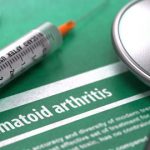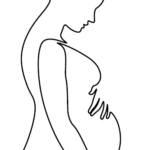A recent editorial provides new insights by reexamining the definitions of remission for rheumatoid arthritis and outlining concerns with the use of specific metrics for remission in clinical trials.


A recent editorial provides new insights by reexamining the definitions of remission for rheumatoid arthritis and outlining concerns with the use of specific metrics for remission in clinical trials.
Background & objectives: Patients with rheumatic and musculoskeletal diseases (RMDs) may be at an increased risk of SARS-CO-V2 infection as a result of underlying disease, associated comorbidities and use of potentially immunosuppressive treatments. Further, concern exists regarding whether individuals with rheumatic diseases potentially experience more severe COVID-19 and poorer outcomes. This study was undertaken to…
Chambers et al. found no evidence of an increased risk of major structural birth defects nor any increase in a wide range of other pregnancy outcomes attributable to prenatal exposure to hydroxychloroquine.

In March A&R, Remaeus et al. reported on the results of their study, which evaluated pregnancy outcomes in relation to anti-rheumatic treatment before and during pregnancy, as a proxy of disease severity in pregnant women with psoriatic arthritis (PsA), compared with those without PsA.
In February A&R, Penso et al. reported on the results of their study, which explored whether patients with psoriasis, PsA and AS have a higher risk of developing IBD when treated with an IL-17 inhibitor compared with apremilast, a phosphodiesterase 4 (PDE4) inhibitor, or etanercept, a TNF inhibitor.
In January A&R, Simon et al. report a study to assess humoral and cellular immune responses after infection with, or vaccination against, SARS-CoV-2 in patients with B cell depletion and controls who are B cell competent, finding that B cell depletion completely blocks humoral but not T cell SARS-CoV-2 vaccination response. In the same issue, Connolly et al. evaluated disease flare and post-vaccination reactions in patients with rheumatic and musculoskeletal diseases following messenger RNA (mRNA) vaccination.
A special article in the December issue of Arthritis & Rheumatology summarizes the current understanding of the cardiac toxicity of HCQ and CQ.
Gendron et al. undertook this study to investigate the prevalence and prognostic value of conventional and nonconventional antiphospholipid antibodies in patients with COVID-19.
Bechman et al. set out to describe the frequency and predictors of nonserious infections and compare incidence rates across biologic DMARDs. They found all bDMARDs are associated with a greater risk of nonserious infection, with differences observed between agents. Although unmeasured confounding must be considered, the magnitude of effect is large.

Lee et al. examined the use of a smartphone application to monitor longitudinal electronic patient-reported outcomes on satisfaction and disease activity in patients with RA.